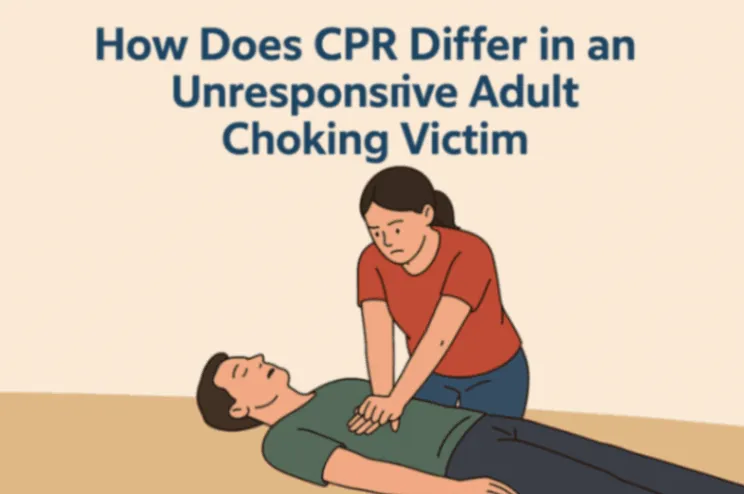Ever felt tired, weak, short of breath, but no fever, and still wondered, "Could this be something serious like pneumonia?"
Most people think of pneumonia as a disease that always brings a high fever and a heavy cough. But what if those signs never show up? It’s a common and important question: Can you have pneumonia without a fever?
The answer is yes — and that’s what makes it so dangerous. When fever is missing, people often mistake pneumonia for a cold, allergies, or plain fatigue. This “silent” form of pneumonia is particularly risky for older adults and those with weakened immune systems.
This blog will take you through this lesser-known side of pneumonia. You’ll understand how it works, how to spot it, and most importantly, when to seek help, especially if you're not burning up with fever but still don’t feel right.
Quick Takeaways
-
Yes, you can have pneumonia without a fever, and it's more common than many realize.
-
Older adults and people with chronic illnesses are especially at risk.
-
Watch for signs like fatigue, breathlessness, confusion, and chest discomfort.
-
Early detection with a chest X-ray can be life-saving even when symptoms seem mild.
Why Pneumonia Can Happen Without a Fever
Not every case of pneumonia presents the same way. Fever is a classic symptom, but it’s not always present. A study of elderly veterans with community-acquired pneumonia found that 39% had no recorded fever. That means almost 4 in 10 missed one of the major red flags.
Fever happens when your immune system reacts to an infection. But when immunity is weak or not working well, like in older people or someone with diabetes, it may not respond with a high temperature. Instead, the infection creeps in quietly.
Possible reasons why fever may not appear:
-
Older age: The immune system slows down with age.
-
Chronic illness: People with diabetes, kidney problems, or lung issues may have milder signs.
-
Medications: Drugs like steroids or chemotherapy may block fever.
-
Weak immunity: People recovering from surgery or having autoimmune diseases may not produce heat.
So, even if there's no fever, pneumonia may still cause damage inside the lungs.
Symptoms of Pneumonia Without a Fever
When fever is missing, it becomes important to notice smaller, softer clues. These symptoms might not scream for attention, but they matter.
Some silent symptoms include:
-
Shortness of breath during small tasks
-
Mild or persistent dry cough
-
Unexplained fatigue or weakness
-
Chest tightness or discomfort
-
Fast heartbeat
-
Light-headed feeling
-
Loss of appetite
-
Confusion (especially in older adults)
People often say, "I just don’t feel like myself." That gut feeling should not be ignored, especially when paired with these mild signs.
In older adults, pneumonia without fever may show up as sudden confusion, low alertness, or a change in behaviour. Family members often think it’s memory loss or old age, but it could be a lung infection.
Why Older Adults Are More at Risk
Older people don’t show typical symptoms of illness. Their bodies don’t react with high fever, high white blood cells, or even coughs in many cases.
One research study (mentioned earlier above) showed that around 39% of elderly veterans diagnosed with pneumonia had no fever. These "silent" infections can delay diagnosis, worsen the condition, and increase the risk of complications.
Some older adults may not complain, even when their oxygen is low. The only clue may be a change in their normal activity—sleeping more, eating less, or not responding like usual.
This is why doctors suggest not waiting for a fever in older people. If breathing becomes harder, energy drops, or they become confused, check with a doctor. A chest X-ray can catch pneumonia even when blood tests miss it.
Causes of Pneumonia That Hides Without Fever
Pneumonia can be caused by bacteria, viruses, or fungi. But not all of them act the same, and not all cause fever.
Most common causes of feverless pneumonia:
-
Atypical bacteria (like Mycoplasma pneumoniae): Known to cause “walking pneumonia” with no fever.
-
COVID-19: Some people don’t get a fever but have severe breathing problems.
-
RSV or flu: In older adults or babies, these may trigger lung infection without the usual signs.
-
Aspiration pneumonia: Caused by food or saliva entering the lungs, often happens during sleep or after a stroke—usually no fever.
-
Immunosuppression: In cancer patients or transplant recipients, even aggressive pneumonia may not raise temperature.
Also, some fungal pneumonia types, like Pneumocystis pneumonia, mostly seen in HIV-positive patients, may skip fever altogether.
Diagnosing Pneumonia Without a Fever
Since classic signs are missing, doctors depend more on listening carefully and using imaging. You may look fine on the outside, but the lungs may be filled with fluid or inflammation.
Diagnosis steps include:
-
History check: Ask about any breathlessness, weakness, sleep problems, or confusion.
-
Lung exam: Crackling sounds on the stethoscope are early signs.
-
Chest X-ray: Still the most common way to confirm infection.
-
Blood tests: Check white cell count, CRP levels.
-
Pulse oximetry: Measures oxygen. Levels below 94% need attention.
-
Sputum test: Not always helpful, but may show bugs.
If things still look unclear, doctors might order a CT scan or even a bronchoscopy in hospital cases.
Pneumonia Types and How They May or May Not Show Fever
|
Pneumonia Type |
Common Cause |
Fever Present? |
Common in Elderly? |
Diagnosis Tool |
|
Bacterial (Strep) |
Streptococcus pneumoniae |
Yes |
Yes |
Chest X-ray, CBC |
|
Viral (Flu, RSV, COVID) |
Influenza, SARS-CoV-2 |
Maybe or No |
Yes |
PCR test, Oxygen test |
|
Atypical (Walking) |
Mycoplasma pneumoniae |
Rarely |
No |
Chest X-ray |
|
Fungal |
Pneumocystis, Cryptococcus |
No |
Immunocompromised |
CT Scan, Sputum stain |
|
Aspiration |
Food/Saliva in lungs |
No |
Yes |
History, Chest X-ray |
When Pneumonia Without Fever Becomes Dangerous
This type of pneumonia can slowly damage the lungs and spread to other parts if untreated.
Complications to watch for:
-
Pleural effusion: Fluid in the chest makes breathing hard.
-
Sepsis: Infection spreads to the blood.
-
Respiratory failure: Oxygen levels fall dangerously.
-
Lung abscess: Pockets of pus form inside.
-
Worsening of heart or kidney disease.
Older adults may end up in the hospital due to late diagnosis. That’s why even mild signs should be taken seriously if you belong to a risk group.
How to Manage and Treat Feverless Pneumonia
Once diagnosed, the treatment is mostly the same as regular pneumonia. But the watch needs to be stricter.
Step-by-step treatment:
-
Antibiotics or antivirals: Based on what caused it.
-
Oxygen therapy: Nasal tubes or masks for breath support.
-
Hydration: Oral or IV fluids to keep up strength.
-
Rest: Avoid stress, reduce movement.
-
Nutrition: Eat soft but rich food to heal faster.
-
Breathing therapy: Use spirometers, deep breathing techniques.
For older adults or weak patients, hospital admission might be needed. Oxygen levels should be monitored daily. Improvement in appetite and energy is a good sign of healing.
How to Prevent Pneumonia That Comes Without a Fever
Vaccination, hygiene, and strong immunity are the best defence.
What you can do:
✅Get the pneumococcal vaccine if you're over 60 or have diabetes.
✅Annual flu shots protect from viral pneumonia.
✅Stop smoking, avoid alcohol.
✅Eat food rich in vitamins C, D, and zinc.
✅Wash hands often.
✅Use a mask in crowds or sick areas.
✅Treat any cough or cold early, especially in kids or seniors.
What to Tell Your Doctor if You Suspect Silent Pneumonia
Here's what you should say to a doctor on your visit:
-
“I feel breathless or unusually tired, even though I don’t have a fever.”
-
“I have a persistent dry cough and low energy.”
-
“There’s been a sudden change in alertness or appetite.”
-
Mention any recent surgery, medications, or chronic illnesses.
Conclusion
Just because you don’t have a fever doesn’t mean your lungs are clear. Pneumonia can be quiet, creeping in with only small signs, like breathlessness, tiredness, or confusion. It often makes people wonder, Can you have pneumonia without a fever? These "silent symptoms" should never be brushed off.
Be alert, especially if you or someone older starts acting differently or looks more tired than usual. And if you ever feel breathless, don’t wait. Get checked.
Frequently Asked Questions
Can pneumonia show up without a cough or fever?
Yes, in older adults or weak patients, pneumonia can come without cough or fever. Watch for breathlessness or fatigue instead.
Is it safe to wait if there's no fever but breathing feels hard?
No. Breathing issues always need checking. Fever isn’t the only danger sign.
How long does pneumonia take to show if there's no fever?
It may start slow. You may notice fatigue or chest pressure in a few days. If symptoms grow, see a doctor.
Can COVID-19 cause pneumonia without fever?
Yes. Many COVID-related pneumonias are silent. Oxygen may fall without you knowing.
Do antibiotics work if there's no fever?
Yes. Fever doesn’t affect treatment. If the pneumonia is bacterial, antibiotics will still work.
Reviewed by







